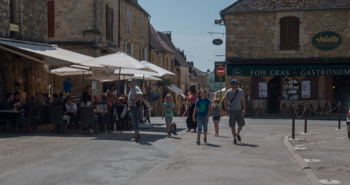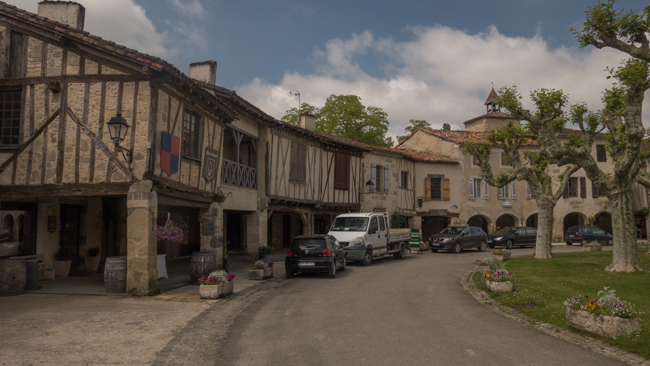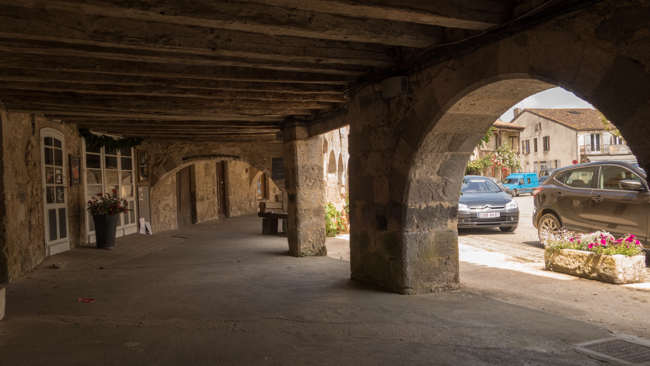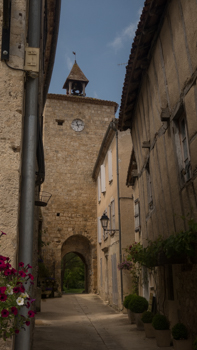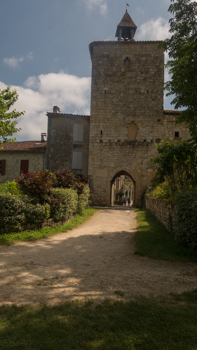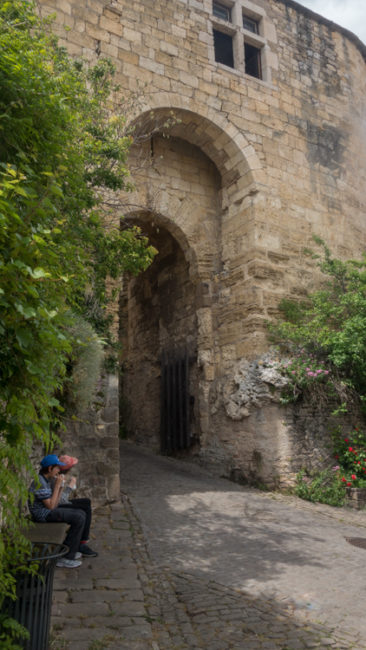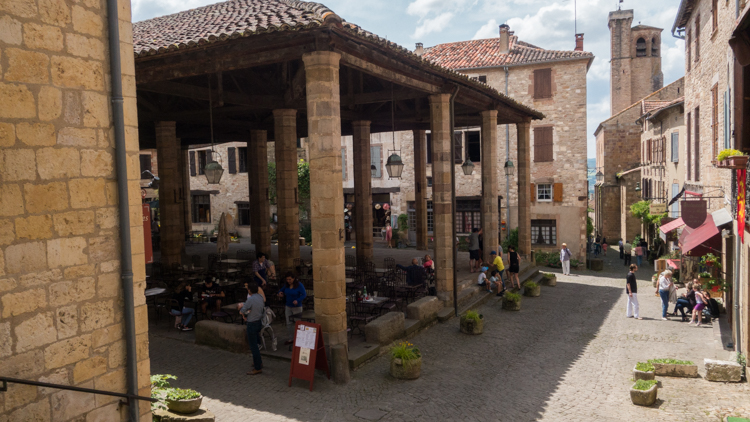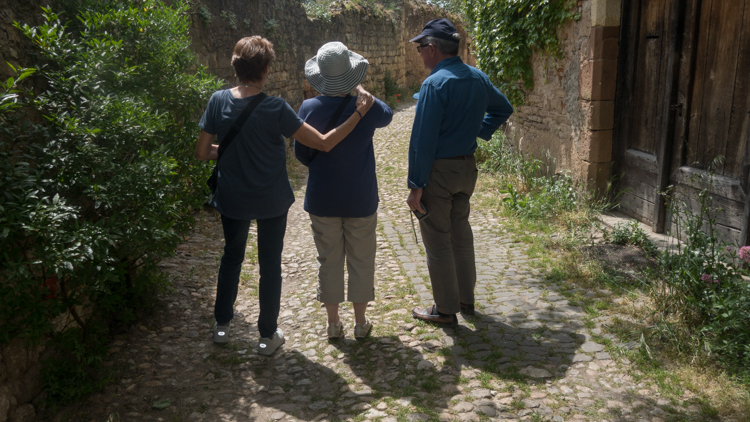In previous years I’ve posted a couple times about bastide towns and, since we visited a few this trip, I’ll combine them into one post. A little background on these interesting towns:
In 1337 the king of France died without a direct heir to assume the throne. Shortly after, the English and the French started arguing about who should be the next king of France. Because the English monarchy actually descended from a French royal family, the English, who still controlled large parts of southwestern France, thought their claim to the French throne was better than anyone in the French royal family. The French politely disagreed and the two sides fell to fighting. For the next 116 years they fought, in three periods of war with not much happening in between, until the French gained the upper hand and threw the English out of France finally.
During much of the Hundred Years War (which should really be the Hundred-Sixteen Years War), the main fighting was done in the part of France we traveled through on this trip). During the wars, both sides built these bastide towns – more by the English – which had several characteristics:
- They were usually square, with straight roads in both directions to allow quick movement of troops from one side to another during a battle.
- They were fortified with walls and towers.
- They almost always had a main square, which contained a covered area for markets, and was surrounded by arcaded buildings.
With that background, here are a few bastide towns we visited.
Domme
An unusual aspect of Domme is that it is built on a hill and is definitely not square; most bastide towns were on flatter land. Because it is in the Dordogne region – a hugely popular tourist area – Domme has become a tourist attraction.

The Dordogne Valley from Domme. Can you imagine being in an attacking army below and looking up at Domme while your officers said, “Go get it!”
Domme was the site of some kind of “American Super-Car” gathering, as we saw 10 or 12 new Corvettes and these three Chrysler Vipers. I might point out that these Vipers, with their V10 engines, would require about somewhere around 60 cents of gas for every mile driven! I guess if you can afford a $70,000 car you can afford to drop five dollars just to get to the grocery store.
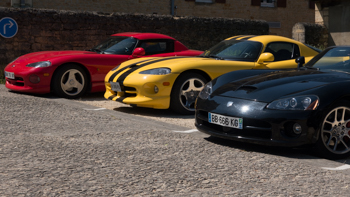
Like many popular tourist places, Domme has the tourist contrast:
Domme is not our favorite bastide, because it seems that its primary purpose is to extract money from tourists’ wallets.
Fources
Fources is an unusual bastide in that it is round. As with many towns of interest, it relies on tourist trade, as there is not much else to keep the town alive. Fources, though, is away from any strong tourist areas, so it has retained more of its small-town, historic feel. We liked Fources, and had a nice lunch here.
Lectoure
Ok, not a bastide, but Lectoure’s church has the best church sign we’ve ever seen:
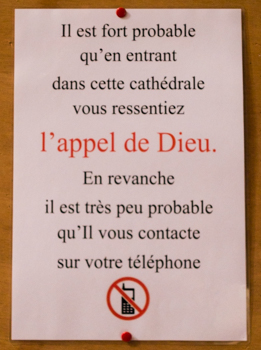
“It is highly likely that a person entering this church will sense the call of God. In return, it is much less probable that he will contact you on your phone. ” And a “turn it off” icon. Love it!
Cordes-sur-Ciel
Like Domme, Cordes is built on top of a hill, and like the other bastide towns, it relies on tourism for income, although there is quite a lot of farming in the area and I suspect some people in Cordes support that farming. However, Cordes’ main attraction for us was a startling church. The church has a beautiful and surprising interior; we just don’t see interiors like this, especially in small, rural towns.

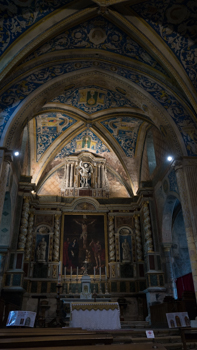
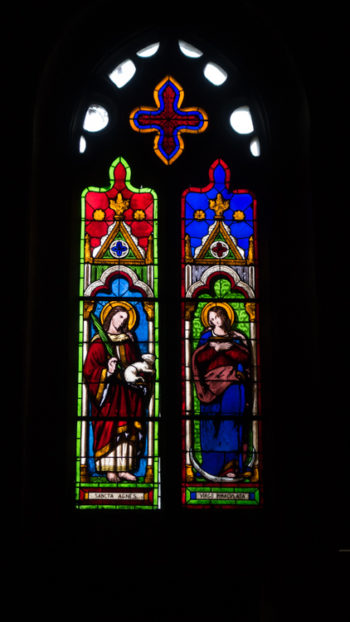
Some more Cordes pictures:
 |
|
One last comment about Cordes: the town has been known as Cordes for centuries. But in its search for the tourist trade, Cordes took advantage of its position high on a mountain-top to rename itself to a more appealing name, Cordes-sur-Ciel: Cordes in the Sky. Ah, marketing…
Vianne
One last bastide, Vianne. This is a real live active town, not relying at all on tourism. I stood in the middle of the main intersection and took pictures looking down each of the four main streets that meet there.
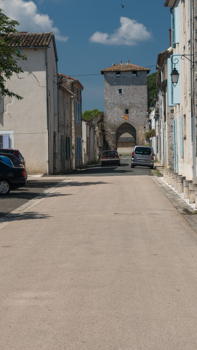 |
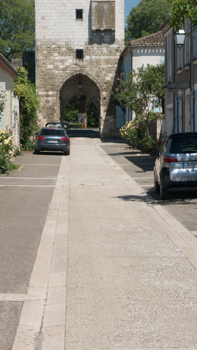 |
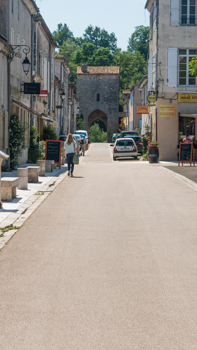 |
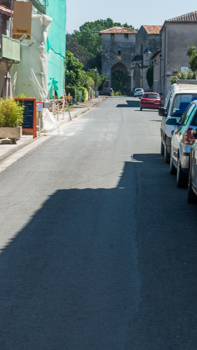 |
The four fortified towers that are the entrances to Vianne – typical of the bastides.
Vianne had one other sight that brought us here: a bridge designed and build by Gustave Eiffel, he of Eiffel Tower fame. It’s likely that his company designed and built it in the 1860s or 1870s, but official histories don’t mention this bridge by name. Still, a beautiful little bridge.
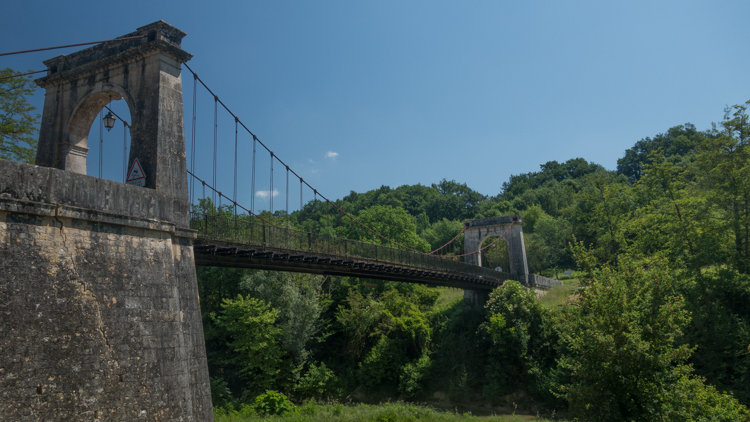
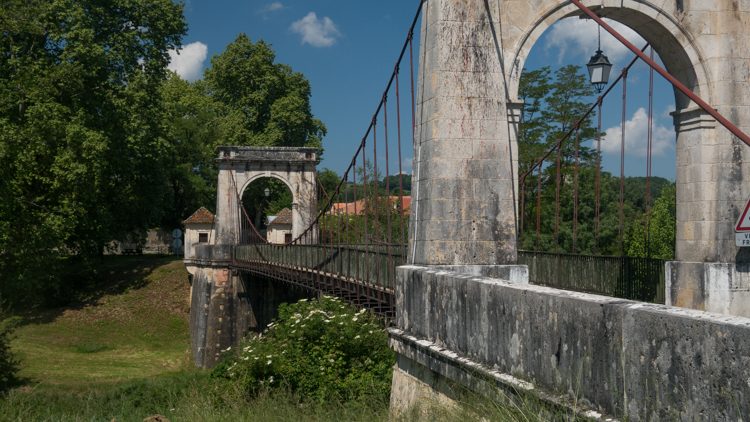
Okay, that’s enough for bastides. You’re probably as tired of reading about them as I am writing about them. I’ve left out our favorite bastide, Monpazier. We stopped there for lunch and a slow stroll through town. If you want to read about our favorite, click here: Monpazier, 2016

